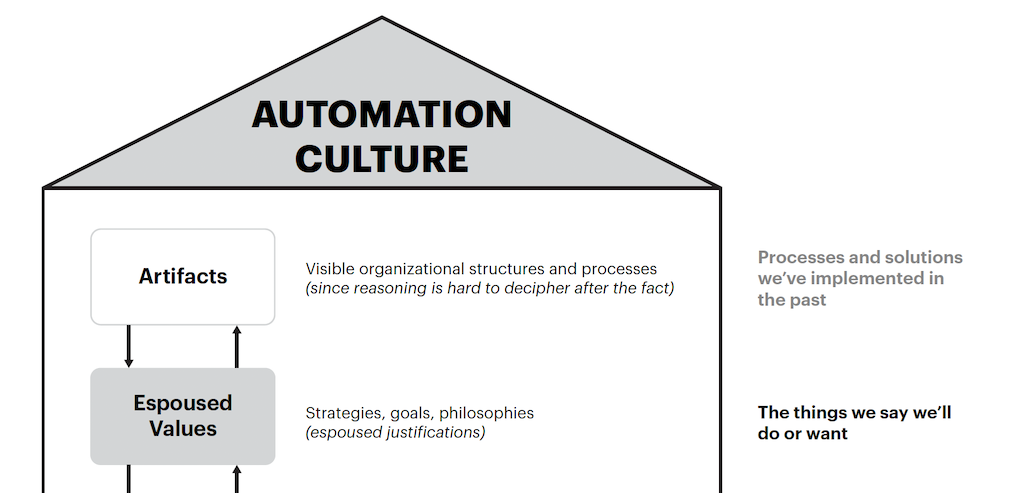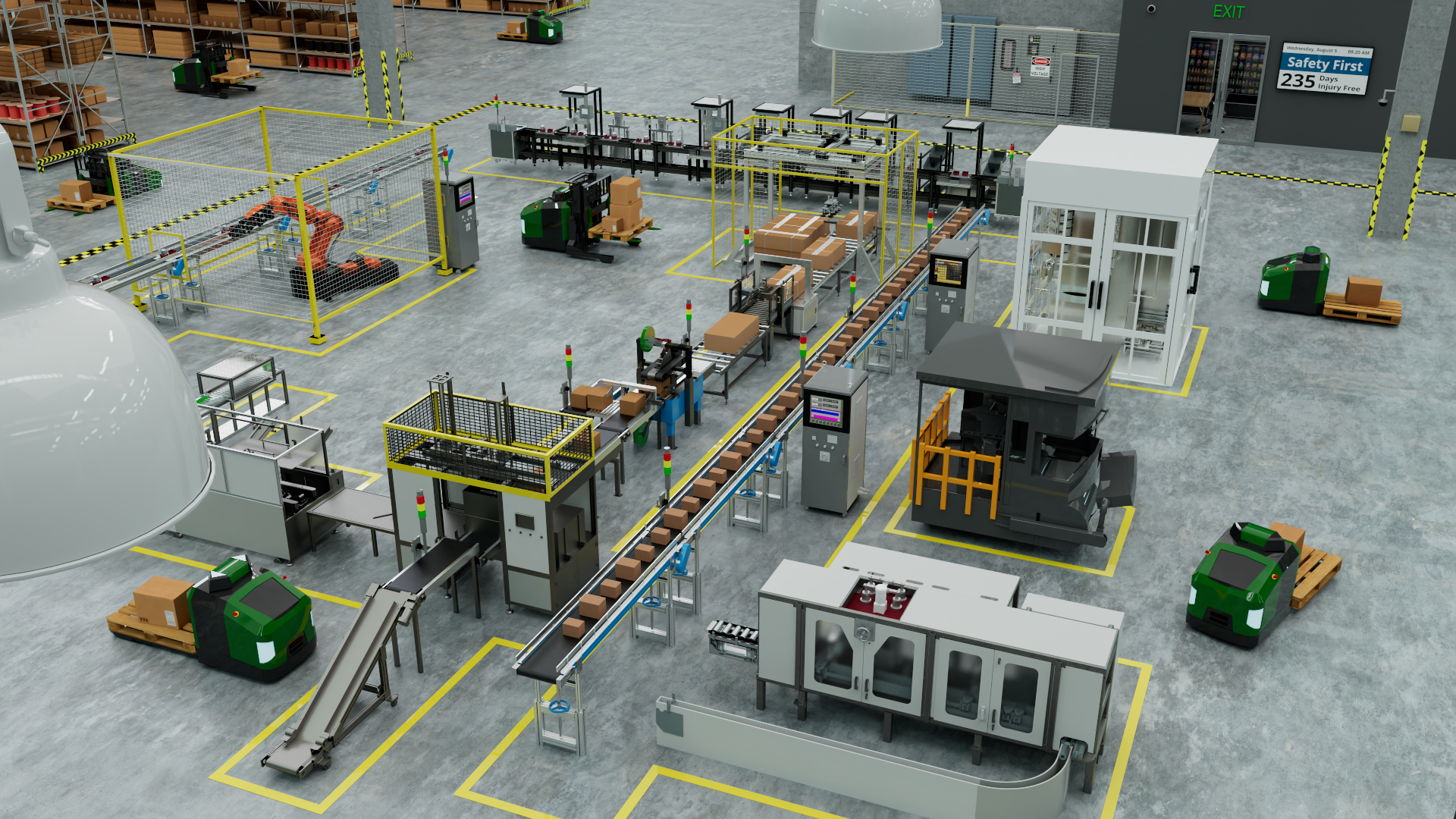Incorporating standardization, optimization, and flexibility fits with Lean’s goals. Motion-centric automation and robotics add speed, flexibility, and productivity, with less energy and product waste.
Lean manufacturing requires exceptional efficiency without sacrificing productivity. While it would seem that highly standardized, rigid manufacturing techniques and technologies would be most desirable, flexible systems reliant on robotics for customization and optimization may offer more opportunities for Lean production. Today, motion-centric automation and robotics are handling of tasks with speed and flexibility that reduce energy and product waste and make employees more productive with less effort.
For end manufacturers, the smart deployment of simple robotics is enabling standardization, optimization, and flexibility, as manufacturing processes are moving from mass-produced product-line systems to industrial jobs with a series-production character. For machine builders, integrated robotics and modularization are enabling quicker, more agile, and much more efficient specialization and faster time to market.
A working definition
The idea of Lean production has been around for more than a quarter of a century but how Lean manufacturing is defined has evolved. In the broadest sense, Lean systems must save time, save energy, reduce waste, and/or be more efficient. As such, the main criteria for Lean manufacturing are technologies, tools, and systems that enable:
- More productivity with less effort
- Waste avoidance
- Reduced engineering time
- Less energy usage
- More flexibility in production workflow or product
- Standardization
- Permanent optimization.
Additionally, manufacturers and original equipment manufacturers (OEMs) dedicated to Lean methodologies may also be focused on:
- Faster preparation of production data
- More transparent production data communication, transfer, and storage
- Increased ability to make modifications within the machine process
- Ease of configurability and control.
Robotics, likewise, needs a working definition as many people picture complex, articulated, or human-like robots. Robotics really start, however, when two axes move on a planned path, or interpolate. Two axes mean two dimensions or two degrees of freedom. Simple kinematics robots (both 2-D and 3-D) are widespread and come in a variety of different sizes. Some examples include:
- Fast and dynamic robots for low payload in consumer goods or packaging
- Big robots with higher payloads such as for “end-of-line” packaging
- Bigger, low-dynamic intralogistics robots with high self-weight and payload such as a stacker crane.
Gantry robots and flexible production
The application of robotics itself can be defined as Leaner, but sophisticated articulated robotics traditionally have been complex and expensive to deploy, involving high investment and operational disruption. What are the ways motion control technology has made the planning and deployment of robotics more efficient and essentially Leaner?
International kitchen manufacturer Schelling designed a material handling system for their new saw center, where a circulating system with two gantry units driven by innovative motion-control technology allow the saw line to work without interruption.
The core principle of the circulating materials handling system is based on gantries, which turn boards after the first longitudinal or top cut and then transport them via brush tables to the next sawing section. The concept on which the circulating system is based makes it possible to optimize cutting diagrams on several levels. Once the parts are finished, a gantry discharges them again for further processing.
The general task is to quickly supply the saw with the right boards and to position them for speedy further transport away from the saw in such a way that they can be processed further in the most efficient way possible, taking into account the current sizes of the parts and the buffer space available. This means that the optimum path has to be calculated for each part while ensuring the sawing line is made free again as quickly as possible to guarantee optimum productivity.
When designing the gantries, Schelling made use of a full-fledged robotics core that offers everything a mechanical engineer’s need for fast and flexible handling tasks, even without any special knowledge of robotics. They also focused on designing path profiles with coordinated multiple axes rather than sequence-controlled single-axis movements of XYZ gantries.
The coordinated movements in 3-D space make the gantries faster and the travel curves considerably gentler. The consequence is a higher number of cycles because maximum end positions no longer have to be approached and, in general, the gantry moves along an optimized pathway. Because improvements to the travel axes are equivalent to time-savings, the gantry can travel more slowly though still arrive at its destination in the same amount of time, meaning it doesn’t need as much power. Consequently, smaller, less expensive drives are more than capable of performing the same tasks, resulting in less power consumption and an overall lighter machine design.
Schelling also relied upon innovative modular motion control software to control most of the functions of the applications. The paths that a gantry robot has to move along can be set with the technology module in standard cases or with the standardized motion commands of PLCopen Part 4. There’s no need for complex motion control programming, saving both time and money, and structured programming provides both quality control and easy re-use.
The paths are processed by a motion controller that communicates with the connected servo inverters via Ethercat. The drives are specially designed for coordinated multi-axis movements and are used with a central power supply module. In this way, the servo controllers are directly supplied with power via the DC-bus system. Due to an exchange of energy between the individual inverters, this improves energy efficiency and, at the same time, enables a compact control cabinet layout. Because the motion controller not only is responsible for motion control but simultaneously serves as an interface to the higher-level plant control system, the saw center is connected to the production planning system so that production can be optimized holistically.
Speeding machine building
Robotics are the best choice to attain a high degree of task flexibility in production—a desirable attribute as industries move closer to individual, responsive production that can pivot based on changes in the market or feedback from sales. And it’s clear that motion control robots can make production and material handling systems Leaner.
The big challenge, then, is for OEMs. How can machine builders fulfill all the potential endless existing requirements of the customers? How can they deliver robotic solutions without having to become experts themselves? Robotics is only one aspect of machine building, after all. The latest advances in motion control automation are changing the way OEMs deliver solutions to their manufacturing and material handling customers, making it easier, faster, and more efficient to offer robotics.
Leading automation specialists now are integrating robotics into the well-known PLC environment of the machine builder, so programming is as easy as a simple positioning axis moving from one point to another. There’s no need for the machine builder to be a robotics expert, and no special programming or engineering resources are required to integrate and offer the capabilities to end manufacturers.
Whether an OEM has to deliver an exceptionally fast pick machine with flexible production or a pick machine with heavy portals, the only thing that needs to be changed is the robotic function. Everything else around the function remains the same. Integrated kinematic robots and standardized systems allow OEMs to fulfill the unique requirements of their customers in a way that is faster, better, and smarter. Now that’s the definition of Lean.
Detlef Stork is the technology manager for motion control at Lenze.



